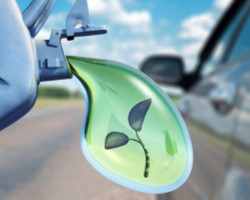Local Knowledge About Ethanol / Flex-Fuel Vehicles

Ethanol, or ethyl alcohol is the same alcohol found in alcoholic beverages, but ethanol also makes an effective motor fuel. Ethanol has a lower energy content than gasoline. That means that about one-third more ethanol is required to travel the same distance as on gasoline. But other ethanol fuel characteristics, including a high octane rating, result in increased engine efficiency and performance. Typically, 15 percent gasoline is added to formulate E85 to assure cold weather engine starting and to enhance flame luminosity in case of fire. Many states and foreign countries are becoming ethanol producers, employing traditional crop feedstocks as well as from agricultural, forestry, and municipal wastes and residues. Flexible fuel vehicles (FFVs) are designed to run on gasoline or gasoline-ethanol blends of up to 85% ethanol (E85). Except for a few engine and fuel system modifications, they are identical to gasoline-only models. FFVs experience no loss in performance when operating on E85, and some generate more torque and horsepower than when operating on gasoline. However, since ethanol contains less energy per volume than gasoline, FFVs typically get about 15%–27% fewer miles per gallon when fueled with E85.
 Ethanol, or ethyl alcohol is the same alcohol found in alcoholic beverages, but ethanol also makes an effective motor fuel. Ethanol has a lower energy content than gasoline. That means that about one-third more ethanol is required to travel the same distance as on gasoline. But other ethanol fuel characteristics, including a high octane rating, result in increased engine efficiency and performance. Typically, 15 percent gasoline is added to formulate E85 to assure cold weather engine starting and to enhance flame luminosity in case of fire. Many states and foreign countries are becoming ethanol producers, employing traditional crop feedstocks as well as from agricultural, forestry, and municipal wastes and residues. Flexible fuel vehicles (FFVs) are designed to run on gasoline or gasoline-ethanol blends of up to 85% ethanol (E85). Except for a few engine and fuel system modifications, they are identical to gasoline-only models. FFVs experience no loss in performance when operating on E85, and some generate more torque and horsepower than when operating on gasoline. However, since ethanol contains less energy per volume than gasoline, FFVs typically get about 15%–27% fewer miles per gallon when fueled with E85.
Ethanol, or ethyl alcohol is the same alcohol found in alcoholic beverages, but ethanol also makes an effective motor fuel. Ethanol has a lower energy content than gasoline. That means that about one-third more ethanol is required to travel the same distance as on gasoline. But other ethanol fuel characteristics, including a high octane rating, result in increased engine efficiency and performance. Typically, 15 percent gasoline is added to formulate E85 to assure cold weather engine starting and to enhance flame luminosity in case of fire. Many states and foreign countries are becoming ethanol producers, employing traditional crop feedstocks as well as from agricultural, forestry, and municipal wastes and residues. Flexible fuel vehicles (FFVs) are designed to run on gasoline or gasoline-ethanol blends of up to 85% ethanol (E85). Except for a few engine and fuel system modifications, they are identical to gasoline-only models. FFVs experience no loss in performance when operating on E85, and some generate more torque and horsepower than when operating on gasoline. However, since ethanol contains less energy per volume than gasoline, FFVs typically get about 15%–27% fewer miles per gallon when fueled with E85.